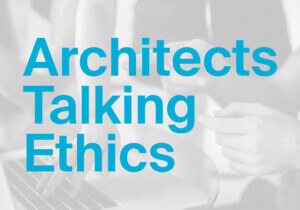Even if Labor Day falls in September in the U.S., May 1 marks International Workers’ Day around the world. The day has been the cause for celebrations of the international workers’ movement since winning the fight for the 8-hour work day in 1904, when the Sixth Conference of the Second International called on “all Social Democratic Party organizations and trade unions of all countries to demonstrate energetically on the First of May for the legal establishment of the eight-hour day, for the class demands of the proletariat, and for universal peace.”
Today, with more and more momentum building behind unionization drives in the AEC industry, AN editors are taking a look back on a year of labor and practice-forward reporting. Unionization in architecture first took center stage when SHoP Architects began bargaining, stalled, and ultimately failed to unionize. But as AN reported in 2022, “Architecture’s labor movement is far from over.” From individual wins for unions at firms like Sage and Coombe Architects to historic architects like Margarete Schütte-Lihotzky that helped blaze a trail for activism and progress, this roundup of reporting chronicles the ongoing struggle for worker’s rights and fair treatment in our industry. We’ve organized our reporting below into three categories: Architects and Unionization, Reimagining Practice, and Labor and Ethics.
Architects and Unionization
What the Bernheimer Architecture Union learned from UTOPIA and the writer’s strike
We, the authors—two unionized employees at Bernheimer Architecture (BA), both serving on the Bargaining Committee—think now is a critical time to seriously consider the consequences of AI-backed automation in architecture. Through our unionization effort at BA, we have come to learn the benefits of collective action, and believe that any effort confronting the use of AI and other technology in architecture requires the strong voice of those who understand production best—not software developers or firm owners, but workers. Chris Beck and Je Siqueira
Architectural Workers United (AWU), a division of the International Association of Machinists and Aerospace Workers (IAM), filed an Unfair Labor Practice (ULP) charge with the National Labor Relations Board “against North American architecture firm Snøhetta for violating their employees’ rights under the National Labor Relations Act,” a press release stated. The ULP charge pertains to Snøhetta’s alleged unlawful discrimination “against several employees because of their support for union organizing.” Dan Roche
New York firm Sage and Coombe Architects announces new office union
New York firm Sage and Coombe Architects announced that it has recognized a union “requested by a committee of firm employees,” according to a statement published on social media. The statement continued: “Although we are uncertain about the impact of this process on an architectural office of our size and history, we respect the right to organize and are proud of what the committee called our ‘humane, open, collegial, and supportive culture.’” DR
Margarete Schütte-Lihotzky was much more than the widely celebrated Frankfurt Kitchen she designed in 1927—a project which catapulted her into the annals of modernism. She was also an antifascist resistance fighter that risked her life battling Nazis during World War II, an anti-Vietnam War activist, a militant feminist, and a bonafide communist that dedicated her life to the working class. And, yes, she was also a damn good architect that designed kitchens, social housing, nurseries, kindergartens, and so much more. DR
Jessor’s buildings were often built hand-in-hand with socialists and radical trade unionists fighting for a fairer metropolis amid the violent throes of industrialization and McCarthyism. In 2023, Herman Jessor’s boldest feat turned 50 years old: Co-op City. There, 15,732 homes are spread across 35 high-rise towers and seven low-rise townhouses on a sprawling 320-acre site in the north Bronx. throughout the years, myriad legendary New Yorkers have passed through Jessor’s flats: a milieu otherwise known as “the commie coops.” DR
Reimagining Practice
Carleigh Pope earned her architecture degree just two years ago, but already she’s an owner of her firm. In October 2023, BNIM, an early pioneer in sustainable design with offices in Kansas City, Des Moines, San Diego, and Washington, D.C., joined the ranks of architecture offices that are 100 percent employee-owned—a growing list that includes Zaha Hadid Architects, SHoP Architects, and Gensler. Pope, who has also been an active member of Kansas City’s NOMA chapter, said the announcement came as a pleasant surprise: “When we made our announcement and I reposted [it] on social media, someone who works in a different firm responded, ‘Oh, our firm just got sold to private equity,’” Pope told AN. Timothy A. Schuler
We learned a lot from this post. We hadn’t revisited our salaries recently, which meant that we had lost some potential hires, as New York City is expensive. The whole thing was a wake-up call, so in that sense, this has been a positive thing. Clearly, the post and its aftermath became a lightning rod for a much larger issue. While we did delete the original post, we didn’t want to pretend as if nothing had happened. Florian Idenburg
New York State Assembly officials are gearing up to pass legislation that goes into effect July 21, 2024 with financial implications for architecture workers. The statute will allow employees at New York Design Professional Corporations (DPC) to “fully use the ESOP ownership form for the first time,” a press announcement from Albany stated. ESOPs have been floated as tentative strategies for making the workplace more equitable; although some question the full extent to which ESOPs empower workers. David Maria, an organizer with IAMAW, told AN: “They don’t allow for collective bargaining, or do much of anything for workers’s rights more broadly.” DR
Labor and Ethics
Design for Freedom held its annual summit at Grace Farms in New Canaan, Connecticut. There, architects, business leaders, engineers, students, construction experts, techies, and other professionals coalesced in the bucolic setting by SANAA to discuss ending forced labor in the global construction industry. According to Sharon Prince, the global construction industry is one of the “biggest offenders of modern slavery and carbon emissions.” The International Labour Organization (ILO) recently found that, today, there are approximately 50 million people living as slaves worldwide; and millions of those people are somewhere in the construction sector. DR
The climate resilience workforce should include architects
On September 27, 2023 for the second consecutive Congressional session, Representative Pramila Jayapal (WA-7) introduced the Climate Resilience Workforce Act (H.R. 5760), or CRWA, a unique piece of legislation that lays the groundwork for a “Just Transition”—the societal shift necessary to address climate change and also redress social inequities. Through a federally-backed plan linking labor and climate resilience, the CRWA establishes a new climate resilience workforce. If architectural workers were to be classified as climate resilience workers under the CRWA, this would open new avenues for architectural labor to address climate, reduce the dependence of our livelihoods on private development, and contribute to a more equitable built environment. The Architecture Lobby’s Green New Deal Working Group
Architects Talking Ethics #1: When, if ever, does it make sense to work for free?
In the first installment of AN’s Architects Talking Ethics column, written collaboratively by Victoria Beach, Peggy Deamer, and Tom Fisher, are asking these questions: What are the ethics of architects? What questions about ethics and architecture do you have? What ethical dilemmas do you face or have faced or anticipate facing? Their answer to the first question: “In an ideal world, all work would be paid, either directly or indirectly (think Universal Basic Income). The question raises issues about what constitutes “work” as well as different kinds of ‘free.’” Victoria Beach, Peggy Deamer, and Tom Fisher
Architects Talking Ethics #2: What should you do when asked to work on a commission you disagree with?
There are at least three ways to answer that question. You could accept it and keep your disagreement to yourself, accept it but try to change or improve upon what you disagree with, or refuse to work on it and accept the consequences. If you are a licensed professional with a charter from the government to protect the public, however, you are not really allowed to put the interests of the client before the interests of the public. So the very first question you should ask yourself in such a situation is: Is this in the interest of the public? Victoria Beach, Peggy Deamer, and Tom Fisher











